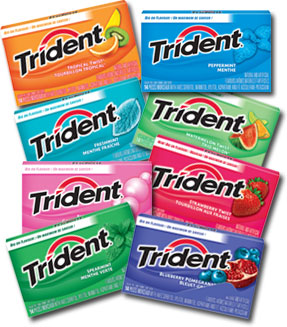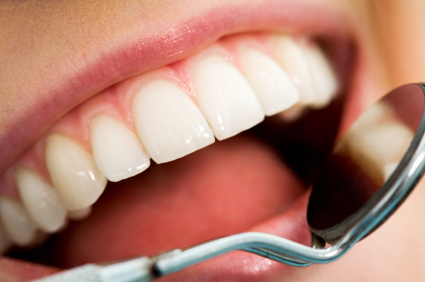Regular dental checkups are recommended every 6 months to clean and examine the health of your gums and teeth. What if chewing gum could help reduce the number of visits you need to make? Would you start using those mastication muscles more and more, enjoying some sugar-free gum that leaves your mouth feeling clean and your breath smelling good? What if that gum contained a natural form of sugar, Xylitol, which will help reduce the occurrence of dental caries, otherwise known as the dreaded CAVITY! 
According to an article published in the August 2012 Dentaltown magazine, “Changes to diet and bacterial levels that impact salivary pH are preventive in nature. Saliva buffering and flow rates are key factors in maintaining neutral or alkaline pH levels.” In the past, reducing sugar consumption has been key in preventing dental caries. It is the increase in salivary flow due to chewing sugarless gum that has been attributed to caries prevention in the past. Now however, studies have shown that xylitol has a more active effect on caries prevention.
What is Xylitol?
Xylitol is a natural sugar found in tree bark, vegetables, and fruits. It doesn’t break down like regular sugar and helps keep the pH of the mouth neutral. The human body even produces 5-10 grams daily through the metabolism of carbohydrates. Corn cobs and stalks are the most sources of xylitol used today. It tastes like table sugar and only has 2.4 calories per gram, BONUS! Initially discovered in 1891, it wasn’t until the 1960s that the benefits of xylitol were recognized for those with diabetes.
In the 1970s and 1990s, several studies were done to recognize the benefits of xylitol in caries prevention. One such study was done with dental students over a five day period. The students ate xylitol sweetened food and drinks and refrained from oral hygiene care such as brushing and flossing for those five days. The study resulted in a 50 percent reduction of plaque accumulation. Another 40-month study was conducted by the faculty of the University of Michigan in Belize with 1,300 fourth grade students. Testing of several different chewing gums was conducted, including a 100 percent xylitol-sweetened gum which resulted in a 73 percent reduction of tooth decay.
At the end of the study, no more xylitol was given to the students, and five years later the researchers returned to evaluate the students again. They found that the students who had chewed the 100 percent xylitol sweetened gum still had a 70 percent reduction of tooth decay compared to other chewing gum groups. It seemed like the xylitol had altered the oral flora of those students and provided long-term benefits.
What does this Mean for You and Me?
Chewing a stick of gum a day may not exactly k eep the dentist away, but it may help reduce the number cavities you get. Xylitol prevents bacteria from sticking to the teeth by neutralizing the pH of your mouth. The acid that would be attacking your teeth for half an hour after eating is stopped with the use of xylitol. Less bacteria and less acid in the mouth means healthier, cleaner teeth! Take notice of the gum you buy. It should be approved by the ADA (American Dental Association) and should contain xylitol. Icebreakers sugar free gum and Trident sugar free gum are recommended, both contain xylitol and can be found in most stores. According to the Xylitol.org website, it’s more about the frequency of exposures to xylitol than the quantity.
eep the dentist away, but it may help reduce the number cavities you get. Xylitol prevents bacteria from sticking to the teeth by neutralizing the pH of your mouth. The acid that would be attacking your teeth for half an hour after eating is stopped with the use of xylitol. Less bacteria and less acid in the mouth means healthier, cleaner teeth! Take notice of the gum you buy. It should be approved by the ADA (American Dental Association) and should contain xylitol. Icebreakers sugar free gum and Trident sugar free gum are recommended, both contain xylitol and can be found in most stores. According to the Xylitol.org website, it’s more about the frequency of exposures to xylitol than the quantity.

Remember to Eat then Chew! Strive for 5 exposures of xylitol a day, brush and floss regularly, and continue to see your Dentist every 6 months for regular checkups so you can be on the road to improving your oral health!












